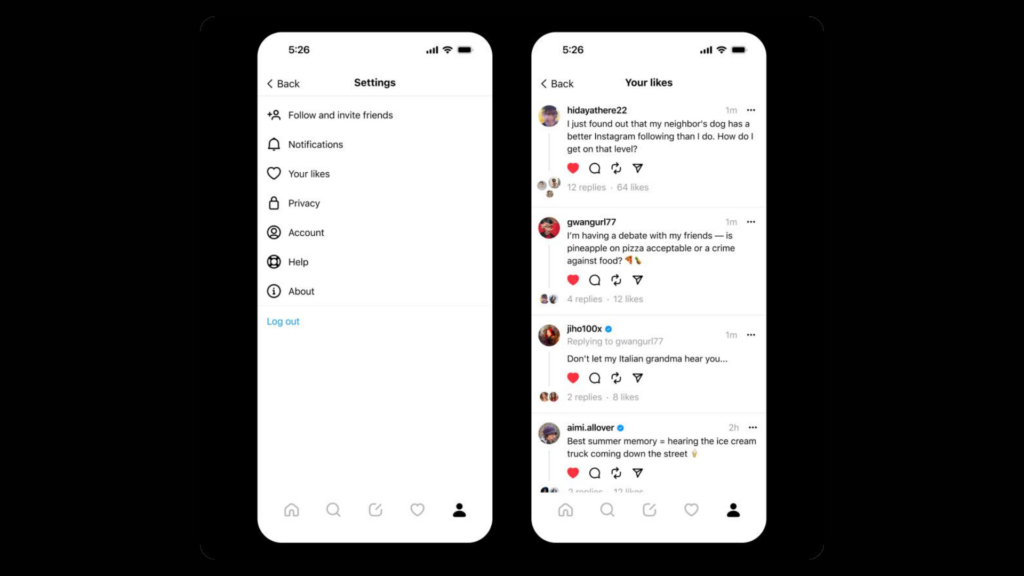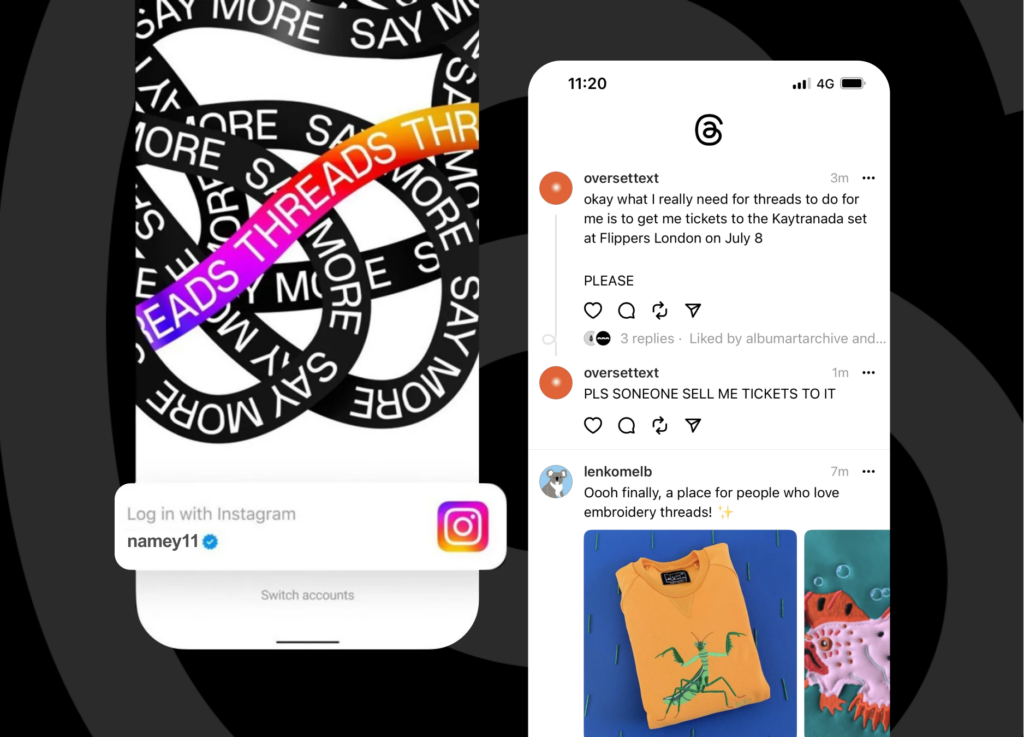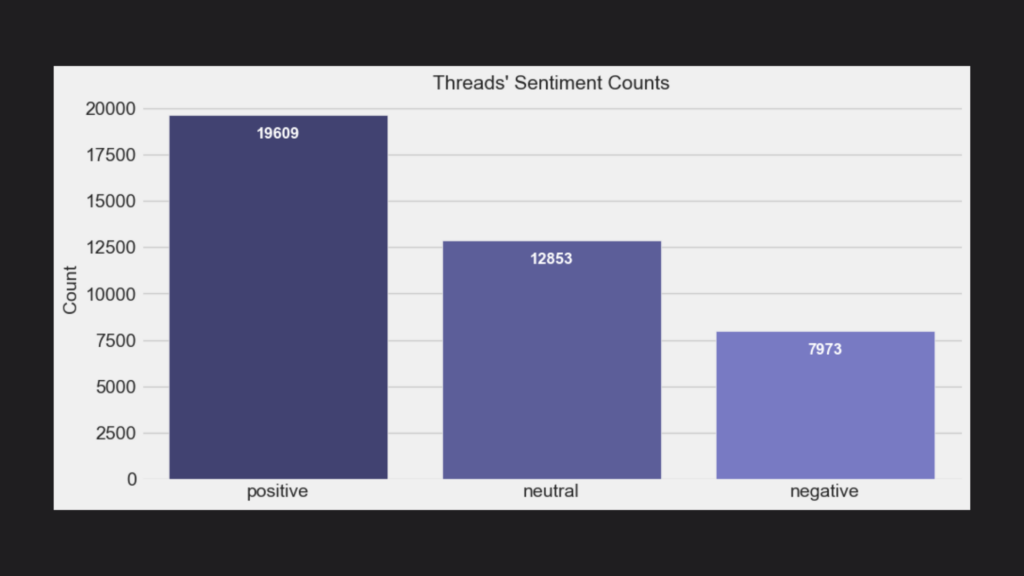
Threads Unraveled: How UX Flaws Weakened a Promising Social Platform
Threads emerged as a social media platform brimming with promise. Its unique focus on threaded messaging and ephemeral content aimed to foster a more intimate and engaging online experience. However, despite its initial appeal, Threads ultimately succumbed to downfall, leaving many wondering what went wrong. While various factors likely contributed to its demise, a closer look at the platform’s user experience (UX) reveals several critical shortcomings that may have played a significant role.
In this article, we unravel the threads of Threads’ demise, focusing on the critical role that user experience (UX) flaws played in its downfall.
Table of Contents
I. Competing with the Giants:
Threads faced an uphill battle from the start, attempting to carve a niche in a landscape dominated by established social media giants like Twitter. These entrenched platforms already boasted a vast and active user base, creating a powerful network effect. This effect essentially means that the value of a platform increases as the number of users grows, attracting even more users in a self-reinforcing cycle.
For Threads, breaking into this established network proved challenging. Users were already accustomed to the existing ecosystem, with established connections and content readily available on familiar platforms. The incentive to switch to a new platform, especially one with a smaller user base, was relatively low.
Limited User Base: A Ripple Effect:
The limited user base of Threads had a cascading impact on the platform’s overall functionality and appeal. Here’s how:
Reduced Engagement: With fewer users, the chances of encountering interesting content or engaging in meaningful conversations significantly decreased. This lack of engagement could have quickly become a deterrent for new users, further hindering growth.
Content Discovery Challenges: Discovering new content on Threads could be akin to searching for a needle in a haystack. The limited user base meant a smaller pool of content to explore, making it difficult for users to find topics or individuals that resonated with their interests.
The Exodus of Key Figures:
The departure of prominent figures from the platform could have delivered a significant blow to its credibility and user trust. These individuals often act as magnets, attracting followers and fostering a sense of community. Their absence could have created a sense of stagnation or decline, further discouraging potential users from joining the platform.
II. Discoverability and Onboarding
Threads’ potential for fostering meaningful connections hinged on its ability to help users find the right people and content. However, several factors might have hampered this crucial aspect of the platform’s user experience.
Finding friends on Threads could resemble navigating a maze.
The platform’s search functionality might not have been robust enough, making it difficult to locate specific individuals, especially those outside of immediate social circles. Additionally, the absence of effective recommendation algorithms could have further limited users’ ability to discover potential connections and build their network within the platform.
Content discovery on Threads could have been akin to searching for a hidden gem in a vast desert.
With a smaller user base, the overall volume of content was likely significantly lower compared to established platforms. This scarcity could have resulted in a struggle to find engaging content or topics that resonated with users’ interests. Furthermore, the absence of features like trending topics or curated feeds might have prevented users from discovering broader discussions and popular content circulating within the platform.
The onboarding process on Threads played a critical role in setting the first impression and guiding users through the platform’s functionalities.
However, if the onboarding experience was unclear or complex, new users might have felt overwhelmed or confused, struggling to grasp the platform’s features and navigate them effectively. This initial frustration could have discouraged them from continuing their engagement with Threads. Additionally, a lack of personalization in the onboarding process could have failed to cater to individual user preferences, hindering their ability to discover relevant content and connections.
Viral sharing mechanisms, such as easy sharing options on other platforms, can act as a powerful engine for user growth and reach.
However, the absence of such features on Threads could have significantly impacted the platform’s ability to attract new users organically. With limited opportunities to share content and experiences beyond the existing user base, the platform’s growth potential might have been restricted. Furthermore, even engaging content might have remained confined within smaller circles, hindering its visibility and potential to generate broader interest within the platform.
III. Content Format and Engagement
Threads’ core concept, the threaded messaging format, presented both unique strengths and inherent limitations. While it offered a space for in-depth conversations and fostered a sense of intimacy, it also faced challenges in captivating a broader user base accustomed to a different style of online interaction.
The Strengths of Threads’ Threaded Messaging:
Nuanced Discussions: The threaded format allowed for extended conversations, enabling users to delve deeper into topics and engage in more elaborate discussions compared to platforms with character limitations.
Community Building: The threaded structure could foster a sense of community, allowing users to follow specific conversation threads and build connections around shared interests.
The Limitations of Threads’ Threaded Messaging:
Limited Reach: Compared to shorter, bite-sized content formats like tweets, threaded messages might have struggled to capture attention and achieve widespread virality. This could have restricted the platform’s reach and user base growth.
Steeper Learning Curve: Engaging in threaded conversations might require more effort and cognitive investment compared to consuming quick, easily digestible content. This could have posed a barrier for users accustomed to faster-paced online interactions.
Comparing Threads to Twitter: A Tale of Two Formats:
Twitter’s format, characterized by concise messages and a fast-paced feed, caters to users who prefer quick updates and easily consumable content. This approach aligns with the shorter attention spans and desire for instant gratification prevalent in today’s digital landscape. In contrast, Threads’ focus on in-depth conversations might not have resonated as strongly with users accustomed to the immediacy and brevity of Twitter’s format.
The Disappearing Act: Did Ephemeral Messages Spark Engagement?
Features like disappearing messages, while intriguing, could have had a mixed impact on engagement.
Novelty and Authenticity: The ephemeral nature of messages might have initially attracted users seeking a more authentic and unfiltered online experience.
FOMO Factor: The fear of missing out (FOMO) could have driven some users to actively engage with content before it vanished, potentially boosting short-term engagement.
However, the impermanence of messages could also have drawbacks:
Reduced Content Value: The knowledge that messages would disappear might have discouraged users from investing significant time and effort in crafting thoughtful responses, potentially impacting the overall quality of content and discussions.
Limited Archiving and Sharing: The inability to save or share disappearing messages could have hindered users’ ability to revisit valuable information or share it with others outside the platform, potentially limiting the platform’s long-term value and appeal.
While the threaded messaging format offered unique advantages for fostering in-depth conversations and community building, its limitations in terms of reach, engagement, and user preferences compared to established platforms like Twitter might have contributed to its struggles. Additionally, the impact of features like disappearing messages on engagement remains a complex question, with potential benefits and drawbacks that require careful consideration.
IV. Personalization and Customization
Threads’ approach to personalization and user control deserves scrutiny in understanding its overall user experience. While the platform might have offered some level of personalization, the extent to which users could tailor their experience and express individuality remains a crucial question.
Limited Customization Options: A One-Size-Fits-All Approach?
If Threads lacked extensive customization options, it could have resulted in a generic user experience that failed to cater to individual preferences. This could have manifested in various ways:
Limited Control over Feeds and Content: Users might have been presented with a pre-determined feed or content curation, lacking the ability to personalize their experience based on their interests or preferences.
Restricted Interface Customization: The inability to customize the platform’s interface, such as themes or layouts, could have hindered users’ ability to create a personalized and visually appealing space that resonated with their individual tastes.
The Impact on User Appeal: A Missed Connection?
Limited customization options could have negatively impacted the platform’s appeal in several ways:
Reduced User Engagement: A lack of control over the user experience might have led to feelings of boredom or disinterest, as users felt unable to personalize their interactions with the platform.
Hindered User Expression: Restricted customization options could have limited users’ ability to express themselves and create a unique online identity within the platform, potentially diminishing the sense of community and belonging.
A Look at the Competition: Setting the Benchmark
Comparing Threads’ approach to personalization with its competitors can provide valuable insights. Many established social media platforms offer extensive customization options, allowing users to:
Curate their feeds: Users can choose the types of content and updates they see, ensuring they encounter information that aligns with their interests.
Personalize their interface: Platforms often allow users to customize themes, layouts, and other visual elements, fostering a sense of ownership and individuality within the platform.
By offering a more personalized and customizable experience, these platforms cater to a wider range of user preferences and potentially foster deeper engagement and user loyalty.
While Threads might have offered some level of personalization, the potential lack of extensive user control and customization options could have significantly impacted its user experience. By failing to cater to individual preferences and limiting user expression, the platform might have missed an opportunity to connect with a broader audience and foster a more engaging and personalized online environment.
V. Technical Performance and Accessibility
Beyond the realm of user interface and features, technical performance and accessibility play a crucial role in shaping the overall user experience. In the case of Threads, evaluating these aspects can provide valuable insights into potential shortcomings that might have contributed to user frustration and ultimately, the platform’s decline.
Technical Glitches and Bugs: A Roadblock to Engagement
The presence of technical issues or bugs on Threads could have significantly hampered user experience in several ways. Frequent crashes, lagging performance, or unexpected errors could have disrupted user flow and led to frustration. Imagine trying to engage in a deep conversation only to have the app crash, losing your train of thought and momentum. This type of disruption could discourage users from continuing their engagement with the platform, seeking more reliable alternatives for their online interactions. Furthermore, technical issues can erode user trust and confidence in the platform’s stability. If users encounter frequent bugs or glitches, they might question the platform’s ability to deliver a smooth and enjoyable experience, ultimately leading them to abandon ship.

Accessibility: A Missed Opportunity for Inclusivity
If Threads lacked adequate accessibility features for users with disabilities, it could have alienated a significant portion of the potential user base. This exclusion could have manifested in various ways. For visually impaired individuals, the absence of features like screen readers or text-to-speech functionality could have rendered the platform entirely unusable. They would be unable to navigate the interface, read content, or participate in conversations, essentially being locked out of the entire experience. Similarly, users with motor disabilities might face challenges if the platform lacked compatibility with assistive technologies or if the interface was poorly designed for users with limited dexterity. Navigating menus, typing messages, or using other interactive elements could become frustrating or even impossible, effectively barring them from engaging with the platform.
The combined impact of technical issues and limited accessibility could have significantly hindered user experience on Threads. Frustration arising from technical glitches, coupled with the exclusion of users with disabilities, could have contributed to a decline in user engagement and ultimately, the platform’s downfall. It is important to note that the extent to which these factors played a role in Threads’ downfall is difficult to determine definitively without access to specific data and user feedback.
VI. Beyond UX: Exploring Other Contributing Factors to Threads’ Demise
While the analysis of user experience (UX) sheds light on potential shortcomings that might have contributed to Threads’ downfall, it’s crucial to acknowledge that other factors likely played a role as well. Here, we delve into two additional aspects: brand perception and marketing strategy, alongside user sentiment throughout the platform’s lifespan.

Brand Perception and Marketing Strategy: Missed Connections and Unfulfilled Promises?
The overall brand perception of Threads and its marketing strategy deserve scrutiny. Did the platform successfully establish a distinct identity and effectively communicate its value proposition to the target audience?
Unclear Brand Identity: If Threads failed to clearly communicate its unique offerings and target audience, it might have struggled to resonate with potential users. A lack of differentiation from established platforms could have resulted in confusion and ultimately, user indifference.
Ineffective Marketing Strategy: Even with a compelling value proposition, an ineffective marketing strategy could have hampered the platform’s reach and user acquisition efforts. Failing to connect with the target audience through the right channels or messaging could have limited awareness and ultimately, user adoption.

User Sentiment: A Barometer of Experience
Analyzing user sentiment towards Threads throughout its lifecycle can provide valuable insights into its strengths and weaknesses.
Initial Hype and Gradual Discontent: The platform might have initially garnered interest due to its novelty or unique features. However, if user sentiment shifted towards dissatisfaction or frustration over time, it could indicate underlying issues that ultimately led to its demise.
Unmet Expectations and Unfulfilled Potential: User feedback and reviews can reveal whether the platform lived up to its initial promises. If users felt that Threads failed to deliver on its intended functionalities or provide a fulfilling experience, it could have contributed to its decline.
Conclusion
Threads’ journey serves as a cautionary tale, highlighting the critical role of user experience (UX) in the success of social media platforms. While various factors likely contributed to its demise, a closer look at its UX reveals several shortcomings that might have significantly impacted user engagement and growth.
While UX is undeniably crucial, it’s important to remember that it’s not the sole determinant of a social media platform’s success. Threads’ brand perception, marketing strategy, and overall user sentiment likely also played a role in its closure. A platform with a compelling value proposition but an unclear brand identity or ineffective marketing efforts might struggle to gain traction. Similarly, failing to address user concerns and unmet expectations can lead to dissatisfaction and ultimately, user churn.
The story of Threads offers valuable insights for future iterations of social media platforms. By prioritizing UX throughout the development process, platforms can create intuitive and engaging experiences that cater to the diverse needs and preferences of their users. This includes fostering a healthy network effect through effective user acquisition strategies, implementing robust discovery mechanisms, and offering a range of content formats that cater to different user preferences. Additionally, ensuring seamless technical performance, prioritizing accessibility, and fostering a strong brand identity alongside a well-defined marketing strategy are all crucial elements for building a successful and sustainable social media platform in today’s competitive landscape. By learning from the missteps of Threads, future platforms can strive to create thriving online communities that cater to the evolving needs and expectations of their users.
Take your company to the next level and get results with our world class user experience, interface design and implementation.
Get a FREE 30 min Strategy Session

Related posts
7 UX Design Trends to Look Out For in 2023
2022 has ended and we are starting 2023 with brand new ideas and trends to look for. 2022 left us […]
No-Code Fintech Solutions: Optimizing User Experience for Mobile-First Banking Apps in 2024
The banking industry is undergoing a digital revolution, with mobile-first strategies taking center stage. As consumers increasingly rely on smartphones […]
The Future of UX Design in 2024
User experience (UX) design is the process of creating products and services that are easy to use and enjoyable for […]
Creative product design that gets results
Take your company to the next level with world class user experience and interface design.
get a free strategy session



